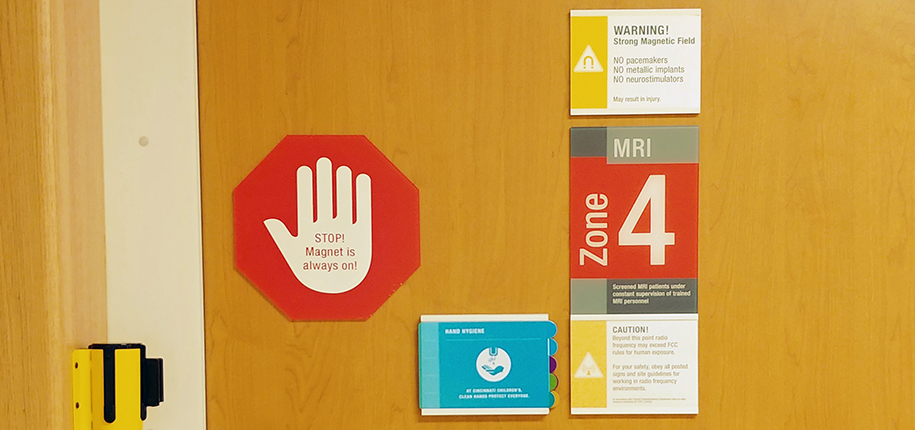
Magnetic Resonance Imaging (MRI) is a technology that uses a very strong magnetic field and radio frequency waves that act on the hydrogen atoms in the body. MRI is used to image all parts of the body. At Cincinnati Children’s, it is often used to image the brain, spine, joints and heart.
To view the parts of the body, the MRI machine generates a strong magnetic field that measures the electromagnetic signals produced by protons within the hydrogen atoms in the body. The magnetic field is stronger as you move toward the MR scanner opening and weaker as you move away from the scanner. To give you an idea of how powerful the magnetic field is generated by our MR machine, it’s stronger than the magnetic cranes used in the junkyards to pick up metal debris. Once the magnet in our MR machines is energized at the time it is installed, it is never turned off. The magnet is always on.
The strength of our MR machine’s magnetic field can be a danger to our patients and staff if not controlled, secured and operated in a responsible manner. Therefore, Cincinnati Children’s uses the ACR-recommended MR Safety Zone concept. Four zones are established around the MR scanner. Access becomes more limited when moving from Zone 1 to Zone 4.
MRI Zone 1
MRI Zone 2
MRI Zone 3
MRI Zone 4
The MR Safety Zone concept is but one of the various security steps we perform at Cincinnati Children’s to keep our staff, patients and families safe.
Meredith Towbin, copy editor